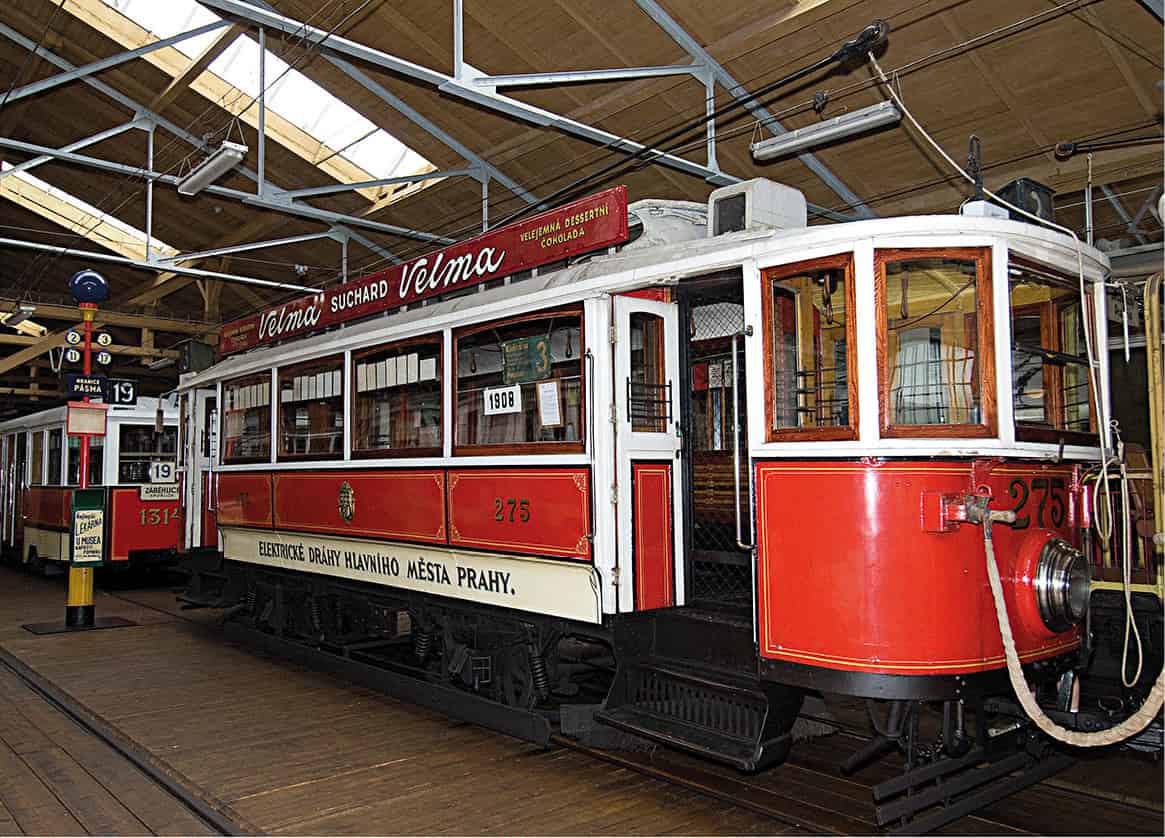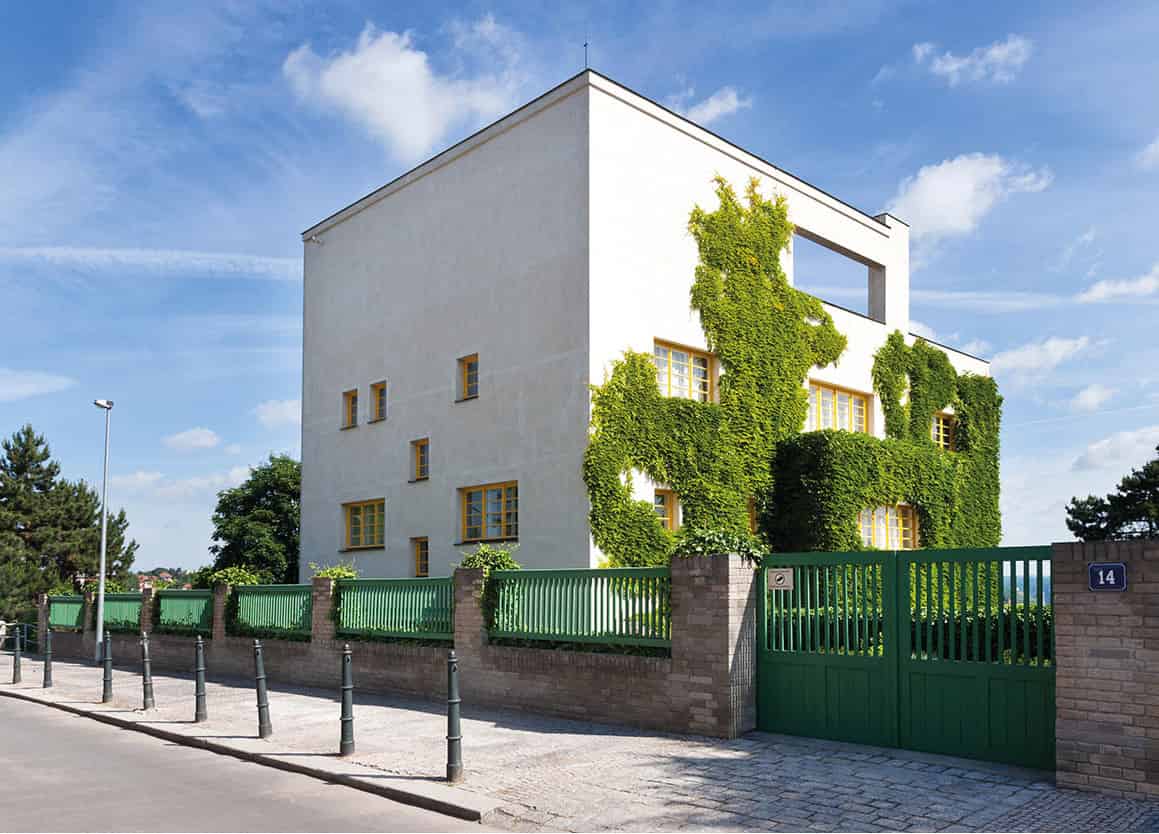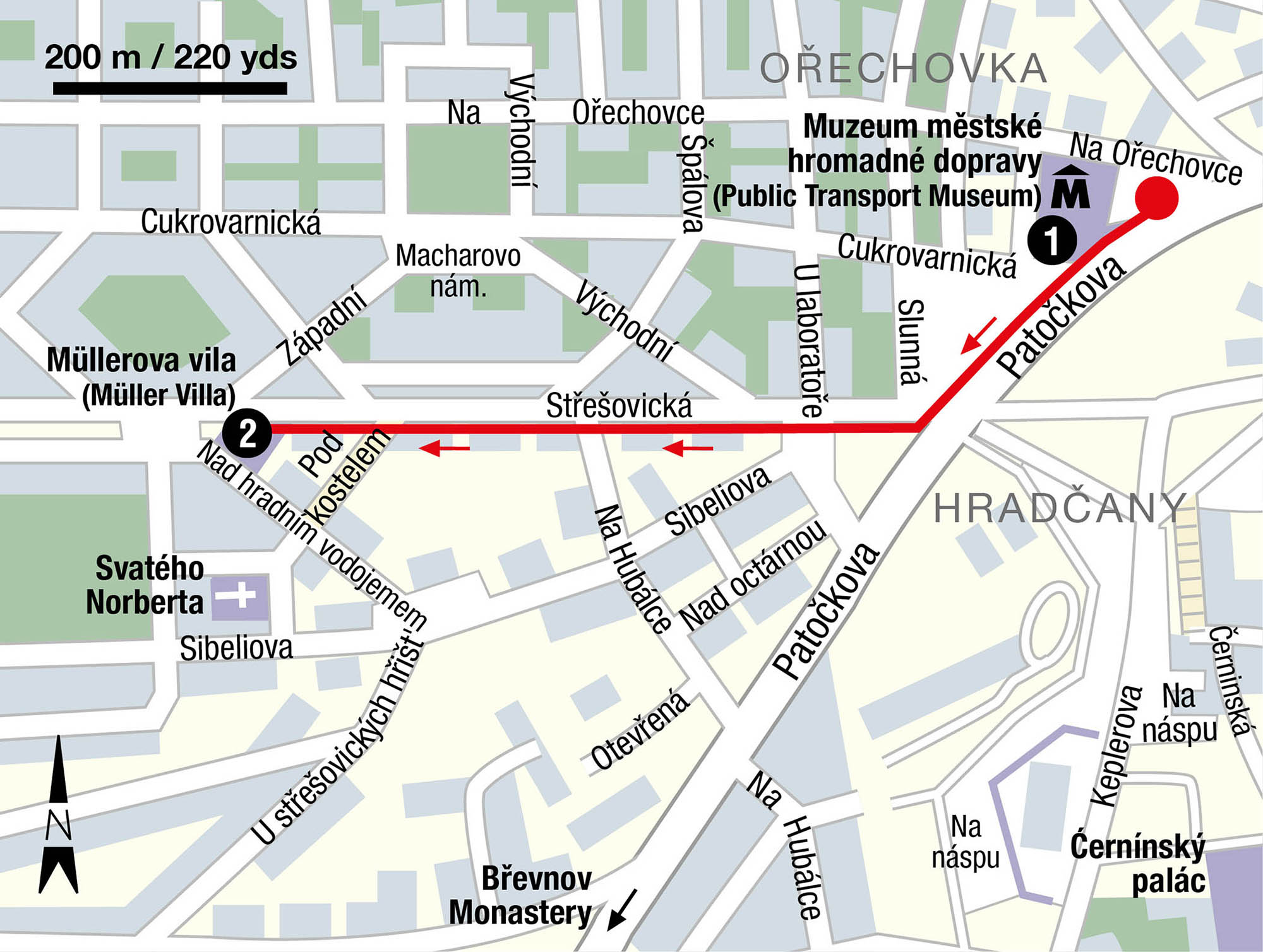DISTANCE: 1km (0.75 mile)
TIME: A half day
START: Public Transport Museum
END: Müller Villa
POINTS TO NOTE: There is nowhere to eat en route, but this visit is relatively short and the tram service quick and frequent, so it is best to eat in town before you set off, or after the visit has finished. Note that the Transport Museum is only open at weekends, while the Müller Villa is also open on Tue and Thu but must be booked in advance.
This route is short, but includes one of the city’s most worthwhile sights for anyone interested in the history of art and design. First, a transport museum gives an overview of how the city’s exemplary public transport system developed over the past 100 years or more, while the latter half of the tour takes you around a gem of Modernist design.

Vintage trams at the Transport Museum
Rod Purcell/Apa Publications
Transport Museum
Begin at the Vozovna Střešovice tram stop (tram Nos 1, 2, and 22 will bring you here). This is just outside the Public Transport Museum 1 [map] (Muzeum městské hromadné dopravy; www.dpp.cz; Apr–mid-Nov Sat–Sun 9am–5pm). Set in an old tram shed, this is also where the ‘nostalgic’ tram No. 91 begins and ends its journey (see www.dpp.cz for times).
The collection
The museum’s collection of trams and trolley buses outlines the history of public transport in the city, from a horse-drawn tram dating from 1886 to a bus dating from 1985. Some of the early trams are beautifully made and decorated in Art Nouveau style, and there is a good exhibition showing the building of the city’s metro system.
Müller Villa
Just around the corner, at Nad hradním vodojemem 14, is the Müller Villa 2 [map] (Müllerova vila; www.mullerovavila.cz; admission only on guided tours that must be booked in advance, Tue, Thu, Sat–Sun Apr–Oct 9am, 11am, 1pm, 3pm and 5pm, Nov–Mar 10am, noon, 2pm and 4pm), Prague’s only example of the work of architect Adolf Loos (see box). The villa was designed and built in 1930 for the wealthy couple František and Milada Müller. As befits an iconic Modernist building, the exterior is plain and severe, but the beautifully designed interiors are luxurious.

The Müller Villa
Shutterstock
The tour, limited to around seven people at a time, is very informative and lasts around an hour. It takes you around all the public and private areas of the villa. Even the heating system and utility rooms show just how well-integrated Loos’ design was.
Now that the villa has been restored to its former glory, visitors can fully appreciate the building’s layout and the use of colour as an element in the organisation of the overall design. Particularly appealing elements are the open-plan living room with its large windows and dining space above, the ‘boudoir’, a cosy space that acted as a private retreat, and the elegant lady’s dressing room.
Adolf Loos
One of the most important architects of early Modernism, Adolf Loos was born in Brno in 1870, then part of the Austro-Hungarian Empire. He trained in Vienna and, after a short period in North America, soon established a reputation as an iconoclast, particularly following the publication of his most influential work, Ornament and Crime, in 1908. This outlined his ideas on decoration (he repudiated it), and these were put into effect in one of his most important buildings, the Michaeler House (1911) in Vienna. The blank, featureless facade was revolutionary and even raised the ire of the emperor, who had to look out on it from the Hofburg. Loos developed this ethos further in his designs for domestic buildings, notably the Steiner House (Vienna, 1910) and the Müller Villa in Prague. He died near Vienna in 1933.
